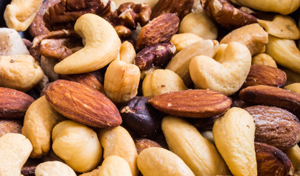 Dec 15: Nuts to you! No, that’s not an insult. It’s a recommendation to add nuts to your diet for the sake of health and longevity.
Dec 15: Nuts to you! No, that’s not an insult. It’s a recommendation to add nuts to your diet for the sake of health and longevity.
Consistent evidence for the health benefits of nuts has been accumulating since the early 1990s. Frequent nut consumption has been linked to a reduced risk of major chronic diseases, including heart and blood vessel disorders and Type 2 diabetes.
The newest and most convincing findings, reported last month in The New England Journal of Medicine, come from the Nurses’ Health Study and the Health Professionals Follow-Up Study, which together have followed nearly 119,000 women and men for decades. Both studies repeatedly recorded what the participants ate and analysed their diets in relation to the causes of death among the 27,429 people who died since the studies began.
The more often nuts were consumed, the less likely participants were to die of cancer, heart disease and respiratory disease, and not because nut eaters succumbed to other diseases. Their death rate from any cause was lower during the years they were followed. (The nuts in question were pistachios, almonds, Brazil nuts, cashews, hazelnuts, macadamias, pecans, pine nuts, peanuts and walnuts.)
I know what you’re thinking: Aren’t nuts fattening? Yes, an ounce of nuts has 160 to 200 calories, nearly 80 per cent from fat.
But in study after study, the more often people ate nuts, the leaner they tended to be.
For example, in a Mediterranean study that tracked the effect of nut consumption on weight gain over the course of 28 months, frequent nut consumers gained less weight than those who never ate nuts, and were 43 per cent less likely to become overweight or obese.
How is that possible? First, nuts may be taking the place of other high-calorie snacks, like chips, cookies and candy. And nut eaters may be less likely to snack, period; the fat, fiber and protein in nuts suppresses hunger between meals.
Second, the body may treat calories from nuts differently from those in other high-carbohydrate foods. Third, nut eaters may pursue a healthier lifestyle and burn more calories through exercise.
And not just tree nuts. The new study found that peanuts were also linked to a reduced death rate and lower risk of chronic disease.
Thus, all nuts are powerhouses of biologically active substances, most of which are known to protect and promote health. Penny M Kris-Etherton, a professor of nutrition at Penn State who has studied the effects of nuts on heart disease, describes them as “complex plant foods that are not only rich sources of unsaturated fat but also contain several nonfat constituents”, including protein, fibre, plant sterols that can lower cholesterol, and micronutrients like copper and magnesium.
Every one of these substances has been shown to ward off one disease or another. The fat content of nuts alone could account for their ability to support heart health. Nuts have less cholesterol-raising saturated fat than olive oil. On average, 62 per cent of the fat in nuts is monounsaturated, the kind that supports healthy levels of protective HDL cholesterol and does not raise blood levels of harmful LDL cholesterol.
Most nuts, and especially almonds, are good sources of vitamin E, an antioxidant. The nurses’ study has linked tree nuts to a reduced risk of pancreatic cancer. In both the nurses’ and health professionals’ studies, eating nuts more than five times a week was associated with a 25 per cent to 30 per cent lower risk of needing gallbladder surgery.






Comments
Add new comment